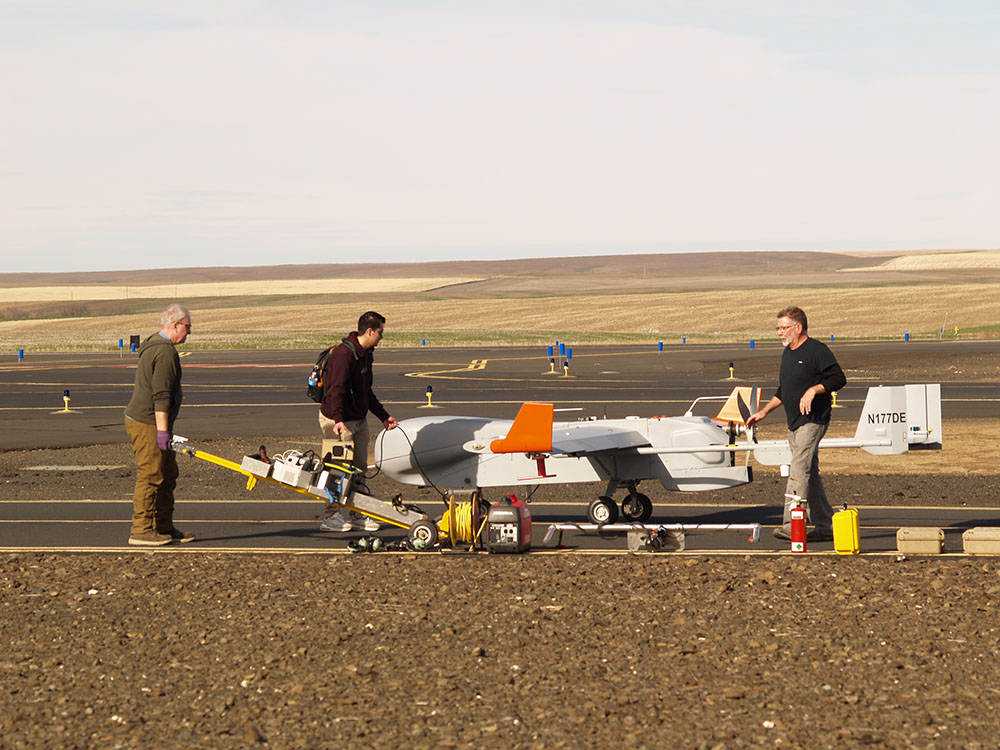ARM Aerial Facility Establishes UAS Advisory Group
Published: 16 November 2023
Outside expertise will give ARM needed perspective as it expands uncrewed aerial system operations

Airborne observations—in concert with ground measurements—are essential in helping to inform a fundamental understanding of clouds, aerosols, and other factors that affect Earth’s surface radiation balance.
It is, in fact, the mission of the Atmospheric Radiation Measurement (ARM) Aerial Facility (AAF), which relies on continually assessing capabilities and expertise within the airborne measurement community to ensure operational excellence and safety. With this mission in mind, the AAF has formed an Uncrewed Aerial Systems (UAS) Advisory Group.
According to AAF Manager Beat Schmid, this panel of independent experts brings a strong focus on operations and safety as opportunities emerge to fly the ARM user facility’s ArcticShark UAS at additional sites to support more research.
Over the past several years, Schmid and ARM leadership have built a staff at the AAF with UAS expertise in operations, training, maintenance, engineering, and safety.
“We’re now entering a new and more intense phase of executing ARM user calls and moving to new sites, such as the new Bankhead National Forest (atmospheric observatory) in Alabama,” says Schmid. “That’s why we sought the counsel of top experts in the UAS community to get their direction on all of our activities—from operations and safety to maintenance and engineering.”
Members of the ARM UAS Advisory Group are:
- Darryl Abling, Range Manager, Pendleton (Oregon) UAS Range
- James Alexander, Programs Director, UAS Research and Operations Center at the University of Maryland
- Catherine Cahill, Director, Alaska Center for UAS Integration at the University of Alaska Fairbanks
- Jamie Dyer, Associate Director, Northern Gulf Institute at Mississippi State University
- Matt Fladeland, Manager, NASA Airborne Science Program office at NASA Ames Research Center
- Chris Patton, Vice President of Defense Programs, Navmar Applied Sciences Corp.
- Mark Rogers, UAS Division Deputy Chief, NOAA Office of Marine and Aviation Operations.
The group will report to Schmid.
Outside expertise, says Schmid, provides perspective as ARM looks to expand its aerial operations, take on new observation challenges, and evaluate user proposals. On November 1, 2023, ARM closed its first ArcticShark call for proposals.
“In any organization, there is the danger of becoming too comfortable in our day-to-day work,” adds Schmid. “This group of experts is outspoken and will not allow any hint of complacency to jeopardize our operational efficiency, safety, and the value we bring to the scientific community. For that, we thank each of them.”
Keep up with the Atmospheric Observer
Updates on ARM news, events, and opportunities delivered to your inbox
ARM User Profile
ARM welcomes users from all institutions and nations. A free ARM user account is needed to access ARM data.


















